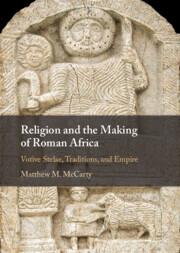Book contents
2 - Historicizing Stelae and Sanctuaries
from Part I - Colonial Histories
Published online by Cambridge University Press: 24 October 2024
Summary
This chapter works to historicize and materialize a family of ritualized practices (molk-style rites) related to the burnt offering of perinatal infants, their deposition in a sanctuary space (conventionally dubbed “tophets”), and the dedication of carved-stone monuments alongside the deposits. Instead of religious permanence or diffusion, it argues for four moments, each with distinctive dynamics, that led communities to embrace these rites. First, between the eighth and fourth centuries BCE, these rites were tied to Phoenician colonization; then, between the fourth and second centuries BCE, the adoption of molk-style rites was tied to migration from these colonial centers. But in the long first century BCE, the boom in molk-style rites was instead tied to the creation of a new, interconnected civic elite in the space between Numidian kingdoms and the Roman province of Africa. Finally, in the second and third centuries CE, migrations related to the Roman army drove the foundation of new sanctuaries to Saturn where stelae (and often molk-style offerings) were dedicated. Stele-sanctuaries were deeply entangled with the power dynamics and institutions of empire.
- Type
- Chapter
- Information
- Religion and the Making of Roman AfricaVotive Stelae, Traditions, and Empire, pp. 27 - 80Publisher: Cambridge University PressPrint publication year: 2024

